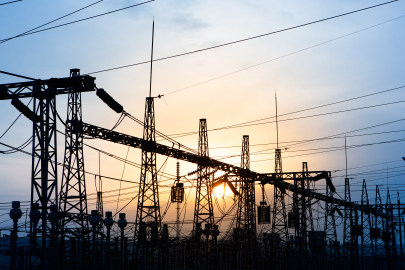The energy sector consists of thousands of electricity, oil, and natural gas assets that are geographically dispersed and connected by systems and networks. Therefore, interdependency within the sector and across the Nation's critical infrastructure sectors is critical. The energy infrastructure provides fuel to the Nation, and in turn depends on the Nation's transportation, communications, finance, and government infrastructures. The energy systems and networks cross the Nation's borders, making international collaboration a necessary component of the energy sector's efforts.
Protecting and improving the resiliency of the energy sector in the face of both manmade and natural disasters is an ongoing effort that requires continued vigilance, contingency planning, and training. With partnership as the cornerstone of its overall strategy, the energy sector has numerous programs sponsored by public and private organizations that support the sector's security vision and goals.
The energy sector will continue to implement effective protective measures as it assesses security needs, develops programs, and finds long-term solutions, including research and development. The Department of Energy's Office of Cybersecurity Energy Security and Emergency Response (CESER) provides technical expertise to help ensure the security, resiliency and survivability of key energy assets and critical energy infrastructure at home and abroad.
Helping to Ensure a Secure and Reliable Flow of Energy to the Nation
CESER works with the Department of Homeland Security, the Federal Energy Regulatory Commission, and other national, regional, state, and local government and commercial organizations to:
- Support the national critical infrastructure protection program,
- Analyze infrastructure vulnerabilities and recommend preventive measures,
- Help other agencies prepare for and respond to energy emergencies and minimize the consequences of an emergency,
- Conduct emergency energy operations during a declared emergency or national security special event in accordance with the National Response Framework, and
- Strengthen energy sector cybersecurity preparedness and coordinate cyber incident response and recovery.
-
 On January 20, 2021, Executive Order 13990, “Protecting Public Health and the Environment and Restoring Science to Tackle the Climate Crisis” (E.O. 13990), suspended Executive Order 13920, “Securing the United States Bulk-Power System” (E.O. 13920).
On January 20, 2021, Executive Order 13990, “Protecting Public Health and the Environment and Restoring Science to Tackle the Climate Crisis” (E.O. 13990), suspended Executive Order 13920, “Securing the United States Bulk-Power System” (E.O. 13920). -
As the key DOE resource for Emergency Response and Cyber Security, CESER works to provide consultation and coordination with subject matter experts
-
 CESER’s SLTT Program enhances energy security capabilities, advances emergency preparedness, and strengthens response and recovery.
CESER’s SLTT Program enhances energy security capabilities, advances emergency preparedness, and strengthens response and recovery. -
The Bulk-Power System Executive Order authorizes the U.S. Secretary of Energy to secure America’s bulk-power system from foreign adversaries.
-
CESER accelerated efforts to address high-altitude electromagnetic pulse (HEMP) and geomagnetic disturbance (GMD) risks to the Nation’s energy system.
-
CESER continues to work to address geomagnetic disturbance (GMD) risks to the Nation’s energy system, particularly the electric grid, in close coordination with federal and industry partners, including the DOE National Laboratories, the DHS and the DoD.
-
Robust exercises are crucial to ensure industry and government are better prepared to work as a team during real world emergencies.

